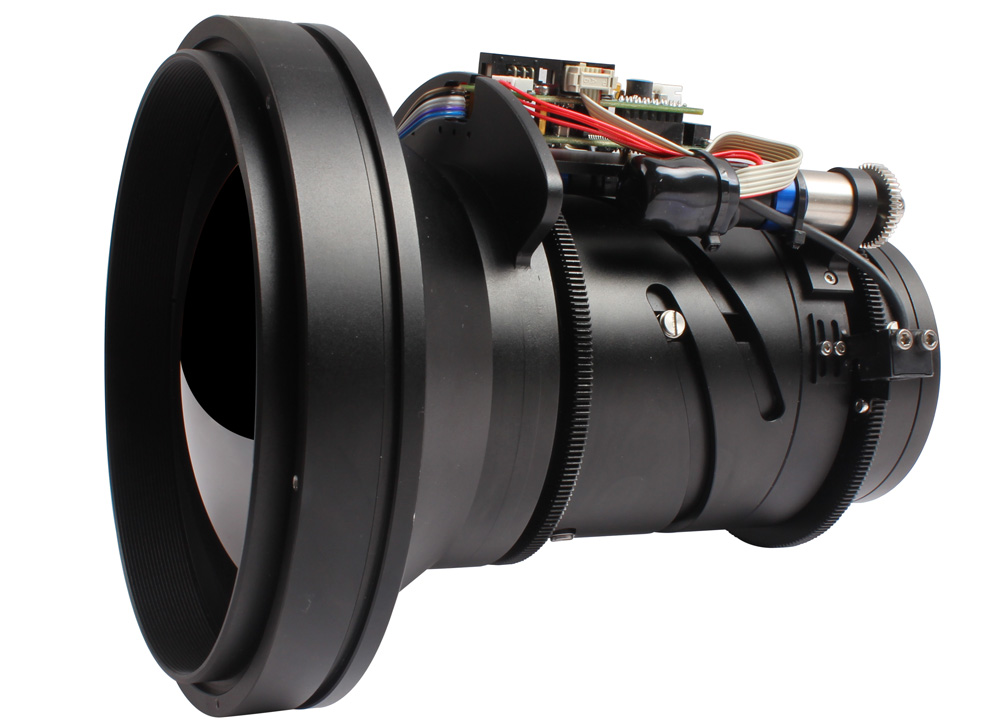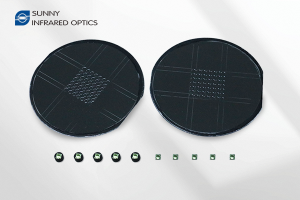When the observation distance is 5 kilometers, what type of Infrared Security Lenses should I choose? What’s the difference between a fixed focus motorized lens and a continuous zoom lens? In what application scenarios do you choose to use the athermalised lens? Do you have the above confusions when you choose your Security Thermal Lenses? This article belongs to the "Guide to the purchase of thermal imaging lenses" series, the main content is the purchase ideas of Security thermal imaging lenses.

Security thermal lenses are mainly divided into three types: Athermalized lenses, motorized lenses and continuous zoom lenses.
Athermalized lenses are mainly used for fixed-distance target monitoring, such as airport, road, factories, etc.,). With the design of athermalized and the characteristics of compact structure and high reliability, it can always maintain a clear image in the temperature range of -40℃~85℃.
The motorized lenses are mainly used for monitoring targets at different distances, such as various small and medium-sized PTZ cameras. By controlling the action of the focusing motor, the lens group is driven to move at a uniform speed to achieve clear imaging of focusing subjects at different distances.
Continuous zoom lenses are mainly used in various large-scale PTZs, such as forest fire prevention, ship detection, etc. This type of lens can change the focal length of the system within a certain range, so that the size of the image surface can be continuously changed, and the goals of tracking search in a large field of view and careful observation in a small field of view can be achieved. This is an irreplaceable advantage of fixed-focus lenses.
As the core parameter of the security thermal lenses, the focal length determines the detection distance of the thermal imager. After determining the observation distance of the target, we usually calculate the corresponding focal length according to the DRI definition in the Johnson Criteria.
The following table shows the DRI data of the target corresponding to common focal lengths (12μm)
| Target object | Human(1.7m×0.5m) | Vehicle(2.3m×2.3m) | ||||
| Focal length | D(Detectable distance / m) | R(Recognizable distance / m) | I(Identify distance / m) | D(Detectable distance / m) | R(Recognizable distance / m) | I(Identify distance / m) |
| 10mm | 400 | 100 | 100 | 1000 | 200 | 200 |
| 15mm | 600 | 100 | 100 | 1400 | 300 | 200 |
| 25mm | 900 | 200 | 100 | 2400 | 600 | 400 |
| 35mm | 1300 | 300 | 200 | 3400 | 800 | 500 |
| 50mm | 1900 | 500 | 300 | 4800 | 1200 | 700 |
| 75mm | 2800 | 700 | 400 | 7200 | 1800 | 1100 |
| 100mm | 3700 | 900 | 600 | 9600 | 2400 | 1500 |
| 150mm | 5600 | 1400 | 900 | 14400 | 3600 | 2200 |
Most of the security surveillance applications are outdoors and various harsh and complex environments, so there are higher requirements for the environmental adaptability of the lens front coating, especially the anti-friction performance, firmness and reliability of the coating. Both DLC and SDLC coatings, with highly resistance to friction and adaptability to harsh environments, are often selected as the first coating for security thermal lenses.
As the first company which provides one-stop production service from raw material to lens assembly in the world, SUNNY INFRARED OPTICS is committed to providing customers with high-quality thermal lens solutions and services with leading optical technology as the core and innovation as the driving force. We are able to accurately meet various standard or customized needs, please feel free to contact us.

+86 574 6253 0985
No. 360, 362 Fengyue Road, Yangming Street, Yuyao, Zhejiang Province, China
Copyright © Ningbo Sunny Infrared Technologies Co., Ltd. (Subsidiary of Sunny Group) | Sitemap | Technical Support:
